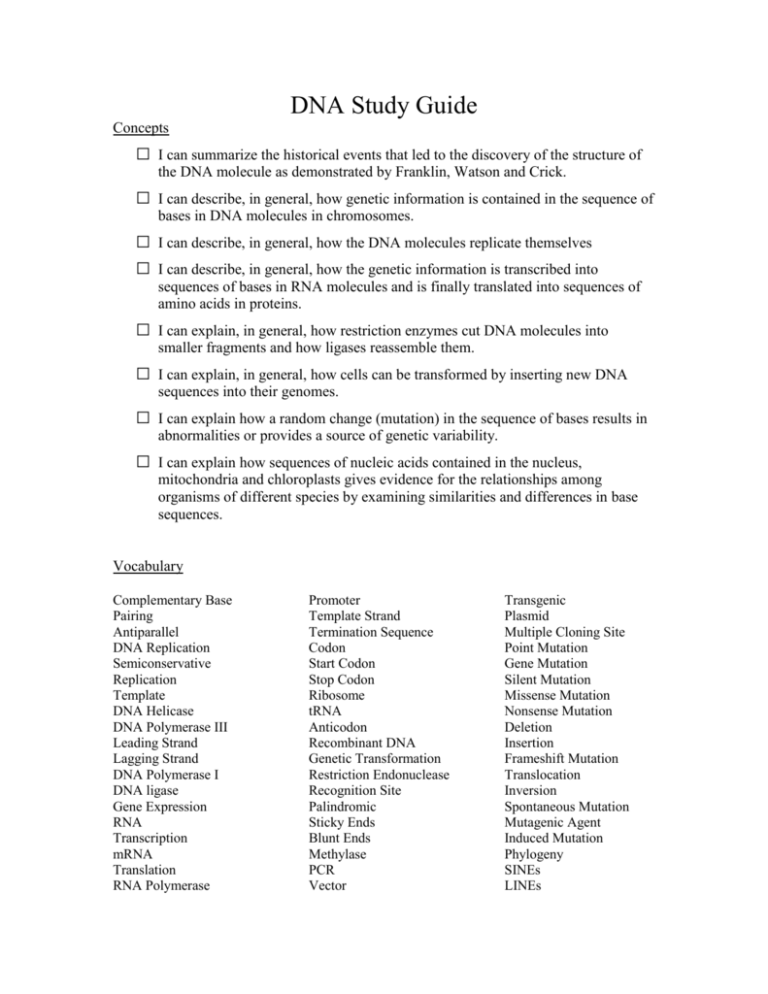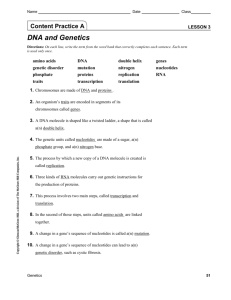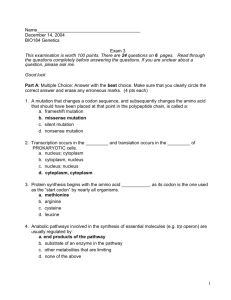DNA Study Guide
advertisement

DNA Study Guide Concepts □ I can summarize the historical events that led to the discovery of the structure of the DNA molecule as demonstrated by Franklin, Watson and Crick. □ I can describe, in general, how genetic information is contained in the sequence of bases in DNA molecules in chromosomes. □ I can describe, in general, how the DNA molecules replicate themselves □ I can describe, in general, how the genetic information is transcribed into sequences of bases in RNA molecules and is finally translated into sequences of amino acids in proteins. □ I can explain, in general, how restriction enzymes cut DNA molecules into smaller fragments and how ligases reassemble them. □ I can explain, in general, how cells can be transformed by inserting new DNA sequences into their genomes. □ I can explain how a random change (mutation) in the sequence of bases results in abnormalities or provides a source of genetic variability. □ I can explain how sequences of nucleic acids contained in the nucleus, mitochondria and chloroplasts gives evidence for the relationships among organisms of different species by examining similarities and differences in base sequences. Vocabulary Complementary Base Pairing Antiparallel DNA Replication Semiconservative Replication Template DNA Helicase DNA Polymerase III Leading Strand Lagging Strand DNA Polymerase I DNA ligase Gene Expression RNA Transcription mRNA Translation RNA Polymerase Promoter Template Strand Termination Sequence Codon Start Codon Stop Codon Ribosome tRNA Anticodon Recombinant DNA Genetic Transformation Restriction Endonuclease Recognition Site Palindromic Sticky Ends Blunt Ends Methylase PCR Vector Transgenic Plasmid Multiple Cloning Site Point Mutation Gene Mutation Silent Mutation Missense Mutation Nonsense Mutation Deletion Insertion Frameshift Mutation Translocation Inversion Spontaneous Mutation Mutagenic Agent Induced Mutation Phylogeny SINEs LINEs










